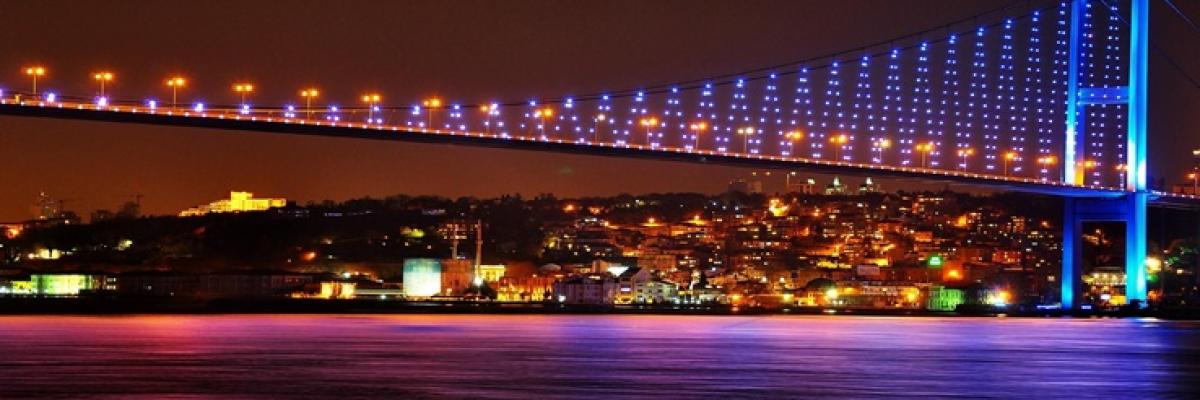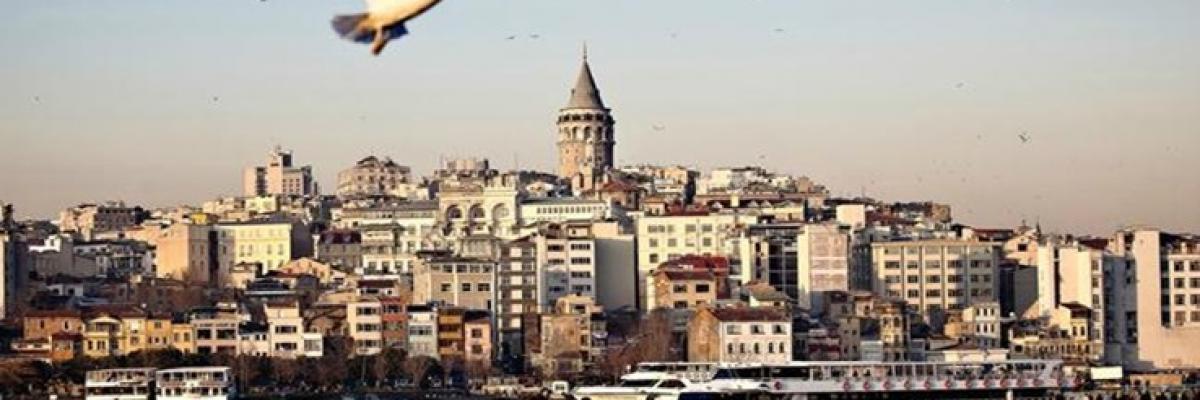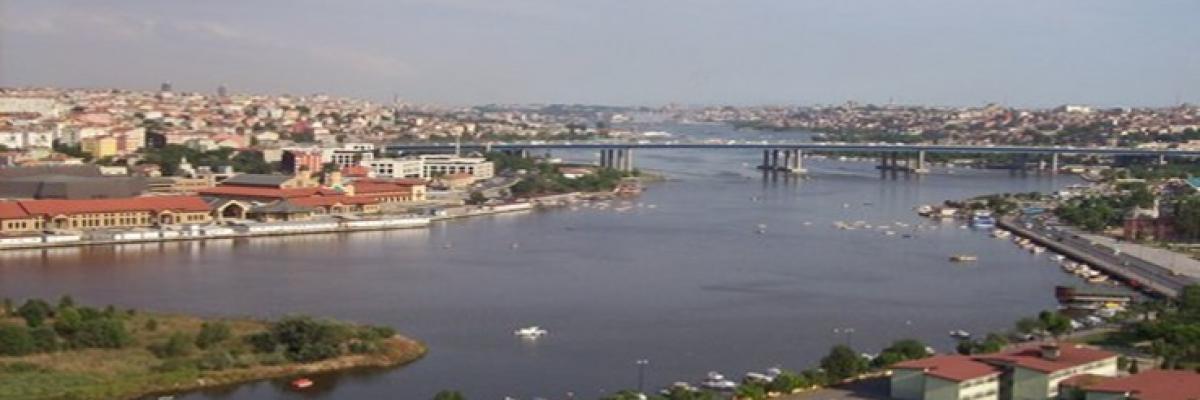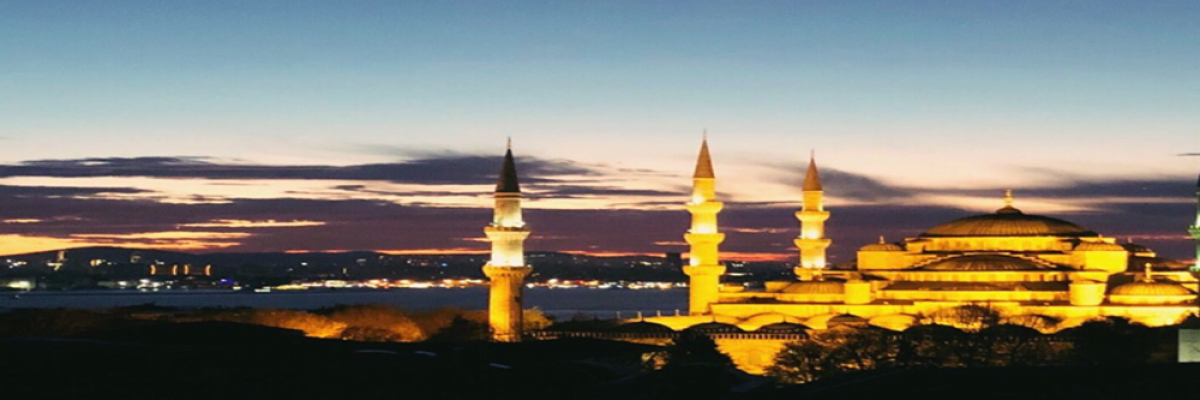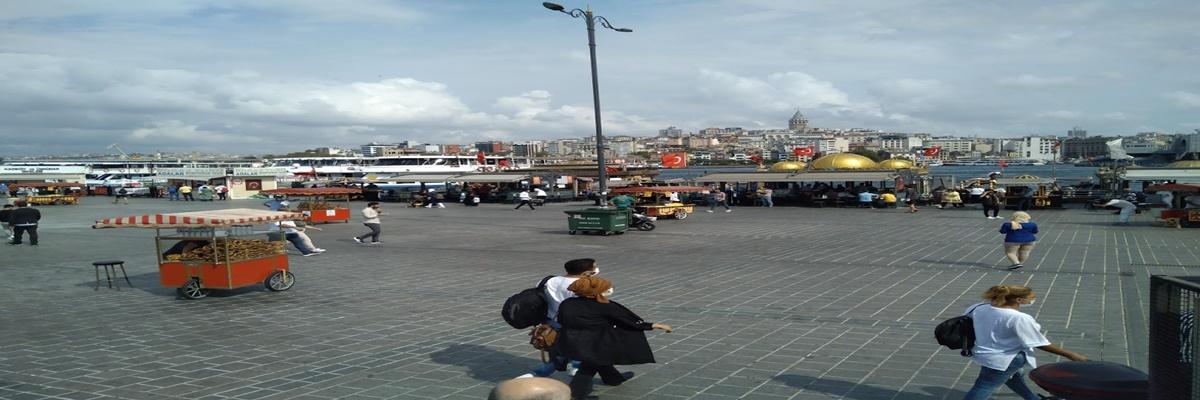The Ottoman Palaces
THE OTTOMAN PALACES

TOPKAPİ PALACE
Topkapı Palace is the glorious witness of the history of Istanbul… Topkapı Palace, which hosted the Ottoman sultans who ruled the world for a period, is now a museum that keeps the magnificent memories of that period alive. Topkapı Palace, which opened a new era in world history and was built by Fatih Sultan Mehmet after the conquest of Istanbul, rises proudly since 1478 in a position overlooking the Golden Horn and the Bosphorus.
Welcome to the Domination Center
Topkapı Palace, the administrative center of the Ottoman Empire, has been the place where more than four thousand important people have been hosted throughout its history. The most important people of history from all corners of the world were welcomed in Topkapı Palace when they visited Istanbul to appear before the Ottoman sultans. Topkapı Palace, which has a courtyard structure consisting of sections such as the Treasury Room, Harem and Sultanate Gate, has been the heart of the Ottomans since the first time it was built and the light of the empire spread from here to the whole world.
Topkapi palace; It was established on an area of 700,000 square meters on the Eastern Roman Acropolis, located at the end of the historical Istanbul peninsula between the Marmara Sea, the Bosphorus and the Golden Horn. The building, which was converted into a museum after the foundation of the Republic, is now spread over an area of 300,000 square meters.
The history of Topkapi Palace, 1460; The history of the museum begins on April 3, 1924. Topkapı Palace, which was started to be built in 1460 after the conquest of Istanbul by the Ottoman army under the command of Fatih Sultan Mehmet in 1453, was completed in 1478 and lasted until the thirty-first sultan, Sultan Abdülmecit, together with the Conqueror. became a treasury, education and arts center. Topkapı Palace, which hosted the Ottoman sultans until the middle of the 19th century, later left its place to Dolmabahçe Palace.
Today, Topkapı Palace Museum is one of the largest palace museums in the world, with about 300,000 archive documents, its magnificent collections of weapons and equipment of that period, as well as priceless treasures such as the Kaşıkçı Diamond.
Topkapi Palace does not have a single architecture. Designed by Fatih Sultan Mehmet, this building was built under the chief architecture of Alaüddin, the most famous architects of the period, and was developed over time with the work of names such as Davud Ağa, Mimar Sinan, Sarkis Balyan and Acem Ali.
Topkapi palace; It consists of buildings such as a pavilion, a mansion, a mosque, a divan, a government office, a kitchen, a ward, a harem and a garden, within the seven-gated fortification, three of which are in the harbor and four on land. The architecture of Topkapi Palace is fascinating; Fatih Sultan Mehmet gathered all the features of Ottoman architecture in this building!

Sections of Topkapı Palace consist of four courtyards with many buildings and a harem. Separated from the city by the Sur-ı Sultani on the land side and Byzantine walls on the sea side, the palace is shaped around the Sultanate Gate (Bab-ı Hümayun) with its monumental entrance. The palace is divided into two main parts. The first of these is the service department Birun; the other is Enderundur, which includes internal organization structures. It is possible to see the most precious examples of Ottoman architecture, arts and crafts in all departments. The fine workmanship of the buildings is particularly evident in the Topkapı Palace tiles.
Harem Room, one of the most popular parts of Topkapı Palace today, was the place where the sultan's family and concubines lived. This structure, also known as the Hürrem Sultan Room among the people, is one of the most aesthetic parts of Topkapı Palace. Harem, which means holy place where everyone is not allowed to enter, is a tradition that the Ottomans took from the Arab culture. The Harem Room was also the section where the palace aristocracy was formed by marrying educated concubines to high-level palace officials, and from this aspect, it can be understood how effective the harem was in the administration of the palace.

DOLMABAHÇE PALACE
The palace, the largest and one of the most beautiful of the Ottoman palaces, whose construction was started by Sultan Abdulmecid Han in 1848, was completed in 1856. It was built by filling the sea in Istanbul and named Dolmabahçe. There were many pavilions, mansions and palaces where it was built. Before the bay was filled, there was the Kasr-ı cihannü, the pavilion called Sareben, and a mansion built by the third sultan Selim Han. After the bay was filled, the small palace of Sultan Ahmed the first in the form of a hunting lodge, the palaces of Sultan Mehmed the fourth and Sultan Ahmed the third were built. The old pavilion was removed and replaced by Sultan Abdulhamid the First, along with the boathouses, a new palace in Iranian style and decorated with tiles. The Beşiktaş seaside palace, which was built here before, was demolished and the Dolmabahçe Palace was built instead. The architect of the Dolmabahçe Palace was Armenian Garabet Amira Balyan and his son Nikogos Balyan, one of the famous architects of that period.
Ottoman Sultans had many palaces in every period. However, Topkapı Palace, which was the main palace, was abandoned after the completion of Dolmabahçe Palace. Dolmabahçe Palace has 3 floors and a symmetrical plan. It has 285 rooms and 43 halls. There is a dock of 600 meters from the sea and 2 monumental gates on the land side, one of which is very decorated. In the middle of this seaside palace surrounded by a well-kept and beautiful garden, there is a ceremony and ballroom that is higher than the other sections.
The entrance side of the palace was used as the reception and meetings of the Sultan, and the wing on the other side of the ceremony hall was used as the harem section. Its interior decoration, furniture, silk carpets and curtains and all other items have survived to the present day, as in the original. Dolmabahçe Palace has a richness and grandeur that cannot be found in any existing palace. The walls and ceilings are decorated with pictures of European artists of the era and tons of gold ornaments. Everything has the same color tone in important rooms and halls. All floors are covered with different, very ornamented wooden parquet. The famous Hereke silk and wool carpets, the most beautiful works of Turkish art, are laid in many places. Rare decorative handcrafted works of Europe and the Far East decorate the palace. Shiny crystal chandeliers, candlesticks and fireplaces display their beauty in many rooms of the palace.
This one is the greatest ballroom in whole palaces of the world. 36 m. The huge crystal chandelier, weighing 4.5 tons, hangs from its high dome. Used in important political meetings, congratulations and balls, this hall used to be heated with an oven-like layout below. The central heating and electrical system was later added to the palace. It is decorated with unique, beautifully carved alabaster marbles in the Selamlik section of the 6 Baths. The upper galleries of the great hall were reserved for orchestras and diplomats.
In the harem section, which is reached by passing through long corridors, there are the sultan's bedrooms and the part of the sultan's mother and other women and servants. The northern annex of the palace was allocated to the princes.
Dolmabahçe Palace, which consists of a large middle and two wings, was built on an area of 64120 square meters.

The main entrance to the palace is the door on the clock tower. In addition, there are ten other gates, some of which open to the sea. An extraordinary ironwork was used in the construction of some of the doors.
It is considered one of the world's famous halls and is 1800 square meters. With its side additions, it reaches 2250 square meters. The dome of the hall, which is placed on 56 columns, is 36 m. is high. There are some of the world's largest floor rugs and 36 crystal chandeliers on the floor of the palace.
The Dolmabahçe Palace, which is magnificent with its geographical beauty, architectural appearance and interior and exterior decoration, has witnessed many historical events. Six Ottoman sultans lived in this palace.
The most important event in the palace, which was used as a residence during Atatürk's visits to Istanbul during the Republic period, is the death of Atatürk in 1938. Atatürk's room, which was kept open to the public, the clocks in the palace were stopped at the hour of death in memory of this great Turk. Dolmabahçe Palace is another must-see Istanbul treasure.

BEYLERBEYİ PALACE
The use of Beylerbeyi and its surroundings as a residential area goes back to the Byzantine period in history. According to the famous traveler İnciciyan who lived in the 18th century, the region, which was called "Cross Gardens" in the Byzantine period due to a cross erected by the Great Countesstant, was used as one of the Sultans' Gardens during the Ottoman period. Again, according to İnciciyan, the name "Beylerbeyi" was given here, due to the mansion of Beylerbeyi Mehmed Pasha in the 16th century.
The Beylerbeyi, which attracted the attention of the sultans in various periods, gained a character that was used as a summer house with some mansions and pavilions built, and in 1829, Sultan II. It gained a new movement with the wooden Beach Palace built by Mahmud.
Today's Beylerbeyi Palace was built by Sultan Abdulaziz II. Mahmud's wooden Beach Palace was demolished and built between 1861-1865 by the well-known architect of the period, Serkis Balyan. The palace was generally used in the summer months, especially for the entertainment of the foreign state. Serbian Prince, King of Montenegro, Shah of Iran, French Empress Eugenie are some of them. Sultan II. Abdulhamid died in this palace in 1918, where he spent the last six years of his life.
The interior architecture of the palace, where various Western styles are combined with Eastern styles, shows similarities to the traditional Turkish house plan consisting of corner rooms opening to a middle hall in terms of usage characteristics. In the palace, which consists of two main sections as Harem and Selamlık, the Selamlık was kept richer than the Harem in terms of equipment and decoration.
There are 3 entrances, 6 halls and 26 rooms in the palace, of which the basement is used as a kitchen and a storage area, with three floors. Against damp and heat, its floors are covered with mats originally brought from Egypt. Large sized rugs and rugs, mostly Hereke made, Bohemian crystal chandeliers, French clocks, Chinese, Japanese and French Star vases are only some of the art structures worth seeing.
One of the aspects that distinguishes Beylerbeyi Palace, which attracts attention with its special location on the Anatolian coast of the Bosphorus, from the last period Ottoman Palaces is the gardens that rise in the form of sets towards the slopes and are therefore called "Set Gardens".
The Yellow Mansion located around the pool in the upper set garden, the Stable Mansion, which is the most interesting example of the era where the sultanate horses were sheltered, and the Selsebilli Marble Mansion from the old palace constitute the important structures of the Ottoman palace architecture.

The most interesting aspect of Beylerbeyi Palace, which was built in a period when relations with the West were getting stronger, is the historical Tunnel that passes under the Set Gardens. In the inscription of the fountain in the middle of the tunnel, Sultan II. Mahmud's name is mentioned and constitutes an important clue in dating the building.
Until today, only Harem and Selamlık sections of the "Beylerbeyi Palace", one of the most important structures of the Anatolian side, could be visited. With the latest works, the "Set Gardens" containing the important natural beauties of the Anatolian side and the "Yellow Pavilion", "Marble Pavilion" and "Ahır Kiosk", which constitute a valuable part of the palace, have been completely handled and restored and opened to visitors.
Enjoy your time and day with Intelligenceturkey Professionals.
To get reservations and information, with the hope of providing an unforgettable experience.
